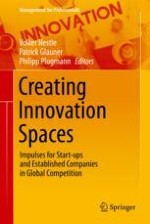2021 | Book
Creating Innovation Spaces
Impulses for Start-ups and Established Companies in Global Competition
Editors: Prof. Dr. Volker Nestle, Prof. Dr. Patrick Glauner, Prof. Philipp Plugmann
Publisher: Springer International Publishing
Book Series : Management for Professionals
